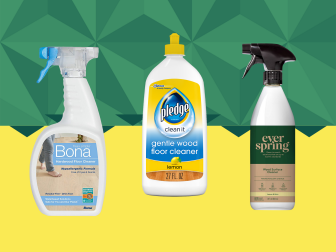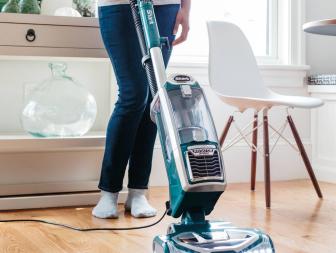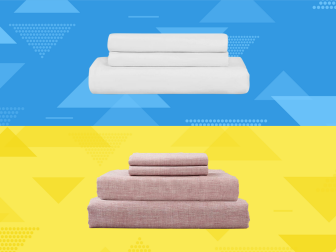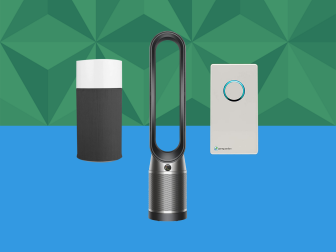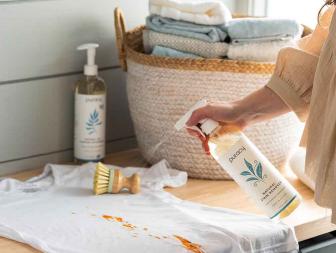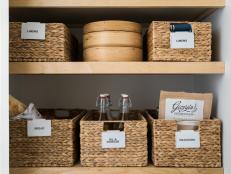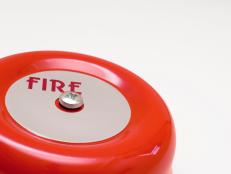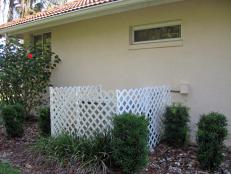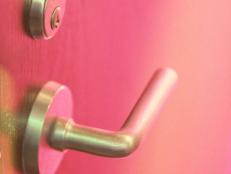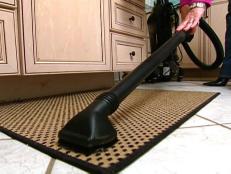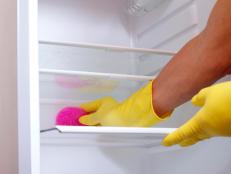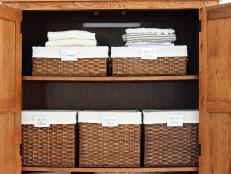Why Is There so Much Dust in My House?
Find the answers to frequently asked cleaning questions, plus get 10 handy tips for making your house less dusty.
Dust is a breezy word for some yucky stuff: sloughed-off skin cells, animal dander and hair, dust mites and their feces and decomposing bug parts — and that's not counting the fabric fibers and tiny particles of soil, wood, drywall, plaster and paint. Besides not wanting to live among such detritus, many people are allergic to dust mites and pet dander. You can't avoid having to dust — two of the biggest components are skin cells and fabric bits — but you can reduce the amount you have to do. Donna Smallin, author of The One-Minute Cleaner Plain & Simple: 500 Tips for Cleaning Smarter, Not Harder offers some suggestions:
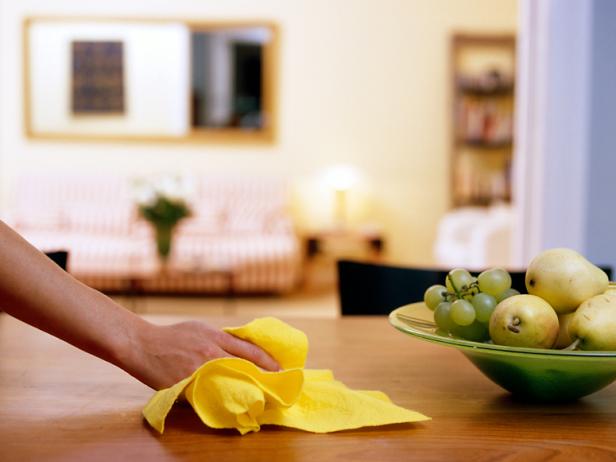
What's the Best Thing to Use for Dusting?
Instead of using an old t-shirt or a mod feather duster, use a microfiber or electrostatic cloth to capture dust, not just move it around. "Nothing beats it. It attracts dust like a magnet," says Smallin. "And the best thing is, when you're done dusting, you can just throw it in the wash, let it air dry and use it again." Microfiber dusters with loops or strips of microfiber trap even more dust. They also come in various shapes and lengths for reaching blinds and ceiling fans. And damp microfiber cloths are excellent cleaners — a mirror will come out streak- and dirt-free without any cleaning solution. If you don't use microfiber, dampen whatever cloth you are using; it will help pick up the dust instead of just moving it around.
Is It Better to Wet or Dry Mop?
A damp mop will clean better than a dry one, but water is hard on some surfaces, such as wood. Microfiber mops come in both dry and wet varieties. And, although it may sound like overkill, Smallin says that if you dry mop your wood floors every day, you'll pretty much nip dust in the bud stage.
Which Should You Do First, Vacuum or Dust?
This is akin to the boxers/briefs debate: There's evidence for both choices, and often it comes down to personal preference. Smallin prefers vacuuming first because vacuums can blow around small dust particles, which you can get rid of by dusting post-vacuuming. But the many dust-first aficionados point out that gravity is on their side; even lightweight dust will eventually end up on the floor — where you can vacuum it up after you dust.
The Best Hardwood Floor Cleaners, Tested by HGTV Editors
We mopped and sprayed our way through top-rated hardwood floor cleaners to help you choose the best solution for your home.
How Often Should You Change Air Filters?
Change the air filters in your heat and air conditioning system once a month — or even more often. Pleated air filters catch more dust particles, and some are electrostatically charged to attract pollen and other allergens. Make sure the filter is ranked for the blower capacity of your system. Use the air conditioner to reduce humidity; dust mites love a moist environment.
10 Tips for Lowering Dust
1. Vacuum Frequently
Use a vacuum with a HEPA (high-efficiency particulate air) filter, which traps more of the tiny stuff, and run it once a week on hard surfaces. Carpet and rugs should be vacuumed twice a week, especially if they're high-traffic areas and you have pets that lay on them.
The Best Vacuum Cleaners, According to HGTV Editors
Shop our editors' most-loved vacuum cleaners for every surface and budget.
2. Maintain Your Vacuum
Take care of your vacuum and clean it often. A dirty vacuum that isn't emptied regularly could end up pushing more dust out than picking it up. Empty the canister and change bags and belts when needed, keep the brush wheel free of hair and other material, check for cracks or loose hinges, and get it serviced every so often to keep it running smoothly.
3. Wash Bedding Weekly
Laundering your bedding in hot water on a weekly basis will cut down on dust mites. If you suffer from allergies, you may want to take extra steps like encasing your mattress and box spring in vinyl allergen-blocking covers. Dust mites thrive in moist environments, so use a dehumidifier in your bedroom and consider bedding with cooling qualities that will help prevent night sweats.
The Best Cooling Sheets, Tested by HGTV Editors
No more waking up drenched in sweat — beat the heat with one of these lightweight, breathable sheet sets, tested and approved by HGTV editors.
4. Cut Down on Textiles
Whether on your floors, furniture, windows or in your closet, textiles not only trap dust but create it as they shed and disintegrate. Leather, wood, acrylic and plastic leave dust no place to hide and are easily cleaned. Consider going with bare wood floors with washable scatter rugs. If you must have carpet, opt for a shorter pile.
5. Declutter and Streamline
Books, knickknacks, artwork — the more you have, the more nooks and crannies for the dust to accumulate. Smallin suggests keeping books at the front of the shelf to rob dust of a place to settle and keeping items such as shoes and purses in plastic bins. Plastic bins are also a good idea for storing kids' stuffed animals, a prime dust-breeding ground. Consider putting collectibles under glass.
Stop Household Clutter: 50 Things to Get Rid of Right Now 51 Photos
Ready to declutter your house? Start here with these items you're sure not to miss.
6. Groom Pets Often
Sorry to break the news, but your beloved pets are also a source of dust. Even if they’re short-hair breeds or shed very little, they’re still emitting dander and flaking skin that is adding to your dust. Vacuuming the floor is important, but it is just the beginning. You need to vacuum up all the pet hair and dander wherever it might be hiding. This includes the cushions of your couch, behind furniture and in all the cracks and crevices around areas that your pet likes to hang out. To keep dander down, try to make a weekly habit of brushing and grooming your pet. Even if your pet doesn't shed much, it’s important not to skip this step.
7. Closet Clean-Up
Put your off-season clothing in plastic bins or hanging bags to limit its shedding, and keep the floors of your closet clear so you can zip the vacuum cleaner or dust mop over them as you do your regular cleaning.
8. Sweep Often
Don't overlook your old friend, the broom. If you have tile floors that have uneven surfaces, Smallin recommends an angled, synthetic-bristle broom because it can get into corners and picks up smaller particles than a natural-fiber broom. Then damp mop to seal the deal.
9. Use an Air Purifier
Air purifiers can work wonders to reduce common pollutants like dust, pet dander, smoke and other harmful particles from the air. They work by pulling air into the machine at the base to go through a filter (or sometimes multiple filters) to catch particles and pollutants. Then the clean, filtered air is released back into the room. When shopping for an air purifier, make sure to get a true HEPA filter. A true HEPA filter removes 99.97% of particulates measuring 0.3-micron diameter and is the most reliable and effective type of filter to use. Watch out for marketing jargon, though; if a manufacturer claims a product uses a "HEPA-like" filter, it's possible the machine doesn't meet the 99.97% threshold to be considered a "true HEPA" filter and won't be as effective.
The Best Air Purifiers, Tested by HGTV Editors
Breathe deeper by adding a top-rated air purifier that reduces dust, allergens, pet dander and more to your home.
10. Check for Leaky Ductwork
The amount of dust in your home is as variable as dust itself, depending on the number of people who live in the house. Human skin and textile fibers are major offenders, and there's only so much you can do about either of those. If your house is a dust magnet even with regular and efficient cleaning, check your ductwork and caulking to make sure you're not importing dust from the garage or from the outdoors.
15+ Natural Cleaning Products We Love
Stock up on products that will help you get your house in tip-top shape — all eco-friendly and without harsh chemicals.






